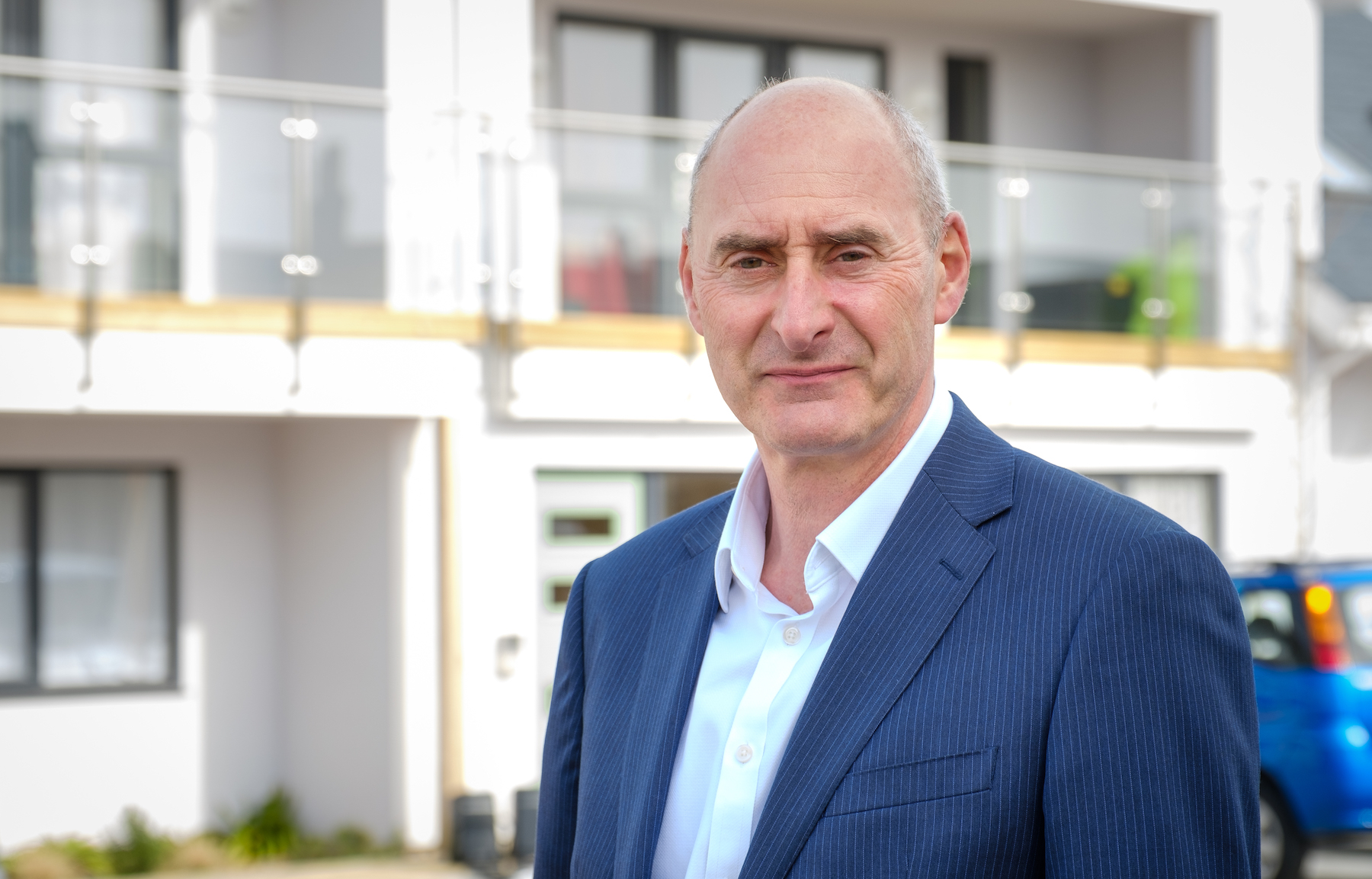


The contentious review of the Island Development Plan continues to drive public and political conversation.
The DPA (Development and Planning Authority) recently concluded that there is already sufficient land zoned for housing to meet private market needs for the next five years – with around 2,000 units possible across these sites.
It came as the Authority published recommendations to change the central planning document – the Island Development Plan – after scaled back review into planning policies.
A handful of industry experts and Deputy Gavin St Pier have now published a joint representation to the IDP.
“We did so to show that – on a small island with finite land resource - policy, strategy and delivery can, and indeed must, collaborate as a cohesive group to tackle what is fast becoming Guernsey’s most pressing issue,” said the Group.
“Having taken the time to meet and listen to each other’s points of view, we offered the following thoughts to Keith Holland, the Independent Planning Inspector tasked with overseeing the IDP Review.”

The group includes Steve Williams, Deputy Gavin St Pier, Paul Nobes (Infinity Group), Alex Fuller (Fuller Group) and Simon Holland (Hillstone).
“The focus of the IDP Review and subsequent agreed changes will be about meeting the objective on which we all agree; the delivery of more much-needed homes for local people and keyworkers,” they said.
“Our focus in this feedback is on the realistic delivery of these homes.”
The group has proposed the following suggestions:
There is an opportunity to increase the spread of residential developable land around the island by slightly expanding the main centres and the existing six local centres.
Additionally, we believe there is the potential to add a local centre at Perelle, close to the existing Morrisons commercial centre. If adopted, this plan would lead to the creation of several smaller housing sites with circa twenty new homes on each. To help in creating these numerous smaller developments, we support rounding off the existing main and local centre boundaries.
This would avoid piecemeal development and merely expand the policy already set out in the IDP, rather than departing away from that policy. This approach will increase the chances of the IDP achieving the desired number of new homes, helping the island’s people and economy in the way we know is so desperately required.
Large sites require large contractors, which Guernsey just does not have in great numbers. What we do have are a number of successful, well-established, medium-sized contractors who not only understand the local landscape, but who also employ local people, paying contributions to ‘Guernsey plc.’ In enacting point 1, the IDP Review will support and enable those medium-sized contractors. If there continues to be a focus on large sites, that will demand the import of contractors from the UK who will themselves require housing to complete projects.
The development of large sites places significant strain on traffic and existing services and a number of identified sites - specifically in the north of the island - are subject to significant concerns regarding the impact on infrastructure and already heavy traffic. Why load the burden of a large development site in these areas, when smaller sites could be developed elsewhere?
All the large sites (50 units and over) identified in the IDP Review have development constraints which are likely to mean they will not produce completed homes within the next five years. If the IDP Review ignores this fact, the IDP will not meet its objective, and will have failed. There are too many new homes dependent on a small number of sites that are individually held up with problems.
Consultations with a wide range of developers make clear that there is a proportion of sites that will never be developed, or whose development will progress at a rate much slower than the demand for housing. Zoning ‘just enough’ land for our needs is not realistic. It also pushes up the values of development land, which makes some sites unaffordable for developers to consider. The IDP needs to allow for a higher over supply of allocated land on the realistic assumption that a proportion of the sites will not be developed.
There are numerous sites which are eyesores, taking up considerable usable space for housing. Brownfield sites are key to creating more equitable viability between green fields and previously built on land and, ideally, developers would steer towards brownfield locations.
This key land could and should be developed, but the sites often require a significant amount of preparation to use. The developers in our group can attest to having to clear and tip tonnes of earth before being able to even consider putting spades in the ground. With tipping fees at eye-watering levels and now nowhere to tip inert waste, how can we turn these valuable and viable plots into realistic development sites?
Consideration needs to be given to the methods the States can deploy to assist in the cleaning up and development of brownfield sites, either financially or by reviewing the environmental standards imposed and the factors that deem these sites contaminated. The question must be asked, have the environmental regulations gone too far, leading to these key brownfield sites becoming prohibitive to develop?
Each designated site needs at least a basic assessment of how deliverable it is. There is little point in zoning land that is unlikely to be developed. The current number of homes the IDP professes to deliver is 1,700 but this includes Leale’s Yard, Kenilworth Vinery (Parc Le Lacheur), Saltpans mixed use (Data Park), the southern part of Cleveley Vinery, and Franc Fief. What do all of these sites have in common? The need for sea flood defences. Sea flood barriers costing several million pounds need to be designed, funded and installed by the States. Let’s be realistic, this will inevitably not happen quickly. We will be lucky if this happens in the next decade.
Developers need to be granted the opportunity to start construction (following all statutory approvals) before the sea flood defences are installed around The Bridge, or those sites will wait years before any spades can start in the ground.
We can all name at least two or three significant sites which currently have planning permission for homes, but which are not being developed. Although we understand the need to support developers, this is not sustainable on an island our size. In line with our recommendations surrounding the development of numerous, smaller sites, the IDP should implement a system that - as these smaller sites are developed - those completed home numbers could be netted off the large, yet to be developed land areas.
This would leave compensatory green open space as potentially open land for public and residents’ use, compensating for the loss of the other smaller pieces of land and giving something back to the public and to biodiversity. It would also incentivise the developers of the few very large sites to get on with producing new homes. A potential double benefit.
It is crucial that the IDP Review is agreed by the current States before the June 2025 Election, otherwise it will be delayed by new Deputies settling into their roles. This will mean yet further delays in new homes being provided. The time for action and sensible, brave decisions is now, so that we can safeguard this island for future generations. We believe that our recommendations provide several practical and workable ‘quick wins’ which will see the beginnings of green shoots of development.

Pictured: Mr Williams is the former Chief Executive of the Guernsey Housing Association.
“We agree with other proposed Review suggestions on the ABI’s, and making change of use and conversion of tertiary commercial space into residential,” continued the group.
“There is clearly unused retail and office space in the main centres, and this would be another ‘quick win’ to convert to housing, whilst also encouraging more life into the St Peter Port town centre.
“We also believe it is a sensible move to reduce the use of Development Frameworks. We urge the DPA to carefully consider our points above, specifically the over dependence on the delivery of most new homes from a small number of large, difficult to develop sites.
“Without spreading the land allocation to numerous smaller parcels of land around the identified centres, the IDP is most likely to fail to achieve the desire of housing people who are in real need and beginning the process of re-balancing the Guernsey housing market.”
Comments
Comments on this story express the views of the commentator only, not Bailiwick Publishing. We are unable to guarantee the accuracy of any of those comments.